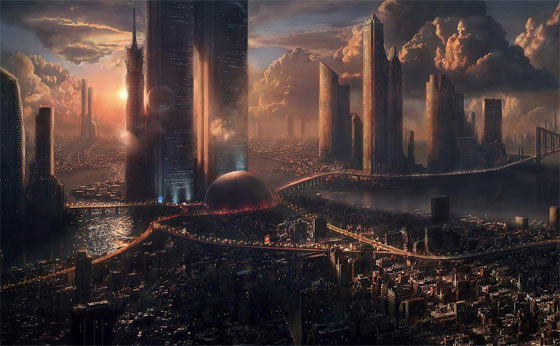Cities Are Artificial and Exist at the Expense of Resources from Elsewhere

Modern cities are not natural in that they are artificial unnatural centers of human existence.
Cities rely upon energy and resources from elsewhere to enable their existence and survival. These resources come from mostly invisible and intertwined complicated ‘just-in-time’ distribution networks and systems. Life in the city wouldn’t exist without them.
Systemic risk? Yes, I believe there is systemic risk there.
Supplies like food, gasoline, and most everything else are all trucked in from other places.
When The Trucks Stop, It’s Over…
Infrastructure systems such as water, electricity, and sewage are all systems that also depend on other infrastructure networks – not to mention their ongoing decay over time.
You might say that cities and even metropolitan regions of suburbia as potential ticking time bombs of disaster. As long as everything is working and functioning as expected, no problem. But when any of the systems glitch, there are immediate repercussions – many of which may rapidly become detrimental to one’s survival.
Normalcy bias has blinded the vision of most as to the systemic risks they face. One aspect of normalcy bias is the assumption that because ‘it’ has never happened before (to them) it is assumed that it never will. The thing is, there are many SHTF ‘triggers’ that have not happened (yet) which could become completely disastrous to anyone living in the cities (or surrounding suburbia) where population density is immense.
Cities are not self-sufficient. Cities cannot feed themselves. EVERYTHING must be delivered-transported to the cities for the people therein to survive. The scary thing is – the majority of the population live in the cities and their surrounding metro regions. ALL of these people are at risk and are (unknowingly) putting their lives and survival in the hands of many others and their systems.
Having said that, the Industrial Revolution and the subsequent advancements in energy and technology have enabled tremendous benefits for the human race. Much of which has taken place in the cities. All I’m pointing out is the fact that there is systemic risk to living there and there is danger while presuming that it will always be safe to do so.
Note: While I’m picking on cities, you might say the same dependencies are there for most other places too. Most people do rely on infrastructure. It’s just that cities are concentrated centers of dependency.
Be aware that cities will be death traps following collapse. Your survival will depend upon having a plan BEFORE disaster strikes.
Know multiple routes out of the city, including those that are NOT major routes.
Read more: The Best Route to Bug Out or Get Back Home
If collapse actually occurs, get out IMMEDIATELY.
Know where you’re going to go (ahead of time!).
Continue reading: It’s Time to Bug Out but Where Will You Go?
